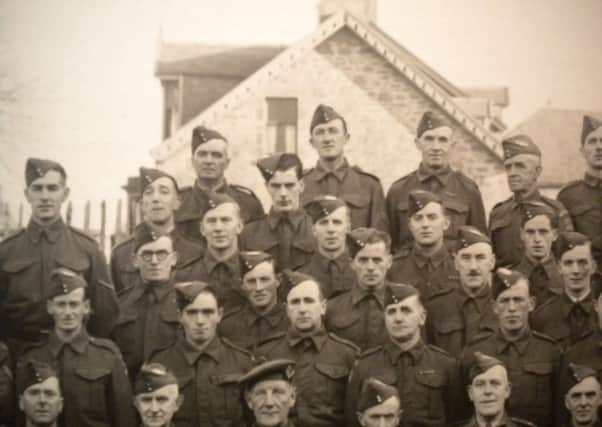What did Lanark Home Guard actually do in the War?


Now the son of a well-known Lanark family is keen to find out what his grandfather did in the war.
Looking into his family history, Andrew Glaister found the Home Guard enrolment form for his grandfather, Thomas Glaister.
Advertisement
Hide AdAdvertisement
Hide AdAnd he would like to know what those serving in the Home Guard did, and whether there are photographs of that organisation, including his grandfather, out there.
Thomas Glaister, whose family had a building firm in St Leonard Street, was only 19 when war broke out in 1939.
Later to become a well known doctor in Lanark, he was at that time a student.
“He was a medical student, which was a reserved occupation, so he actually volunteered to join the Home Guard,” said Andrew.
Advertisement
Hide AdAdvertisement
Hide AdNowadays with memories of Dad’s Army we think of the Home Guard as being a body of old men, but young men in reserved occupations such as farming also joined up.
“It was the old and the young put together to form these battalions,” said Andrew. “Lanark had its own battalion, which was a big group of men! A lot of men came forward.
“Thomas Glaiser trained and served in the 1st Battalion (Lanark) Home Guard, whilst he was a medical student and after National Service in the RAF he became the local doctor in Lanark.”
That was in 1968, but Thomas Glaister died tragically young.
Advertisement
Hide AdAdvertisement
Hide Ad“He died at the age of 46, so we never got to ask what he was doing,” said Andrew.
“All I know is that they used to go up to Winston Barracks for a drill night during the week, and they sometimes had manoeuvres on Lanark Moor.
“There might not be many people in Lanark now who remember the Home Guard or who served in it.
“It would be interesting to find out if anyone knows any more information, or has any more photographs, to bring the story to life, so to speak.”
Advertisement
Hide AdAdvertisement
Hide AdNationally the Home Guard were volunteers who acted as a secondary defence force, in case of invasion by Gemany or its allies. Winston Churchill wanted some form of home defence force raised from men who were ineligible to serve in the regular forces but wanted to serve their country.
These unpaid volunteers guarded the coastal areas of the United Kingdom and other potential targets such as airfields, factories and explosives stores.
Lanark is far from the coast, but Paul Archibald at Lanark Library revealed that it would have had its share of important spots. He understood Spitfires were actually stored at Lanark Racecourse and the diary kept by former Provost Andrew Forrest bears that out.
But it is not clear what they actually DID - possibly because such information was secret in wartime.
Advertisement
Hide AdAdvertisement
Hide AdOne suggestion, again with evidence from the former Provost’s diary is that they dug trenches - as local men they had local knowledge which could be useful in slowing down any sort of invasion.
Looking at Mr Forrest’s diary, Paul pointed out that others were digging trenches in the opening weeks of war.
“At the outbreak of war the assumption was that it would be the same as the last one,” he said, noting the movements of the Yeomanry and the troops, and the assembly of horses.
The diary records that trenches were dug, perhaps as temporary shelters, at the Horsemarket, St Mary’s Field, Hyndford Road, Friarsfield and Delves Park, even before the Home Guard was formed in May 1940.
Mr Forrest also records its third anniversary, on May 16 1943.
But what were the members actually doing? If you have family photos, or memories to share, please contact us .